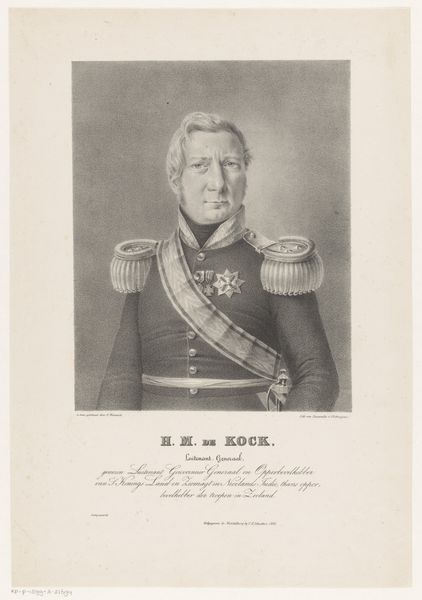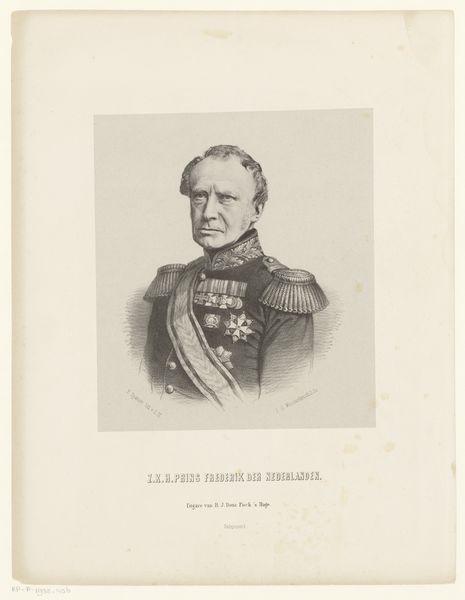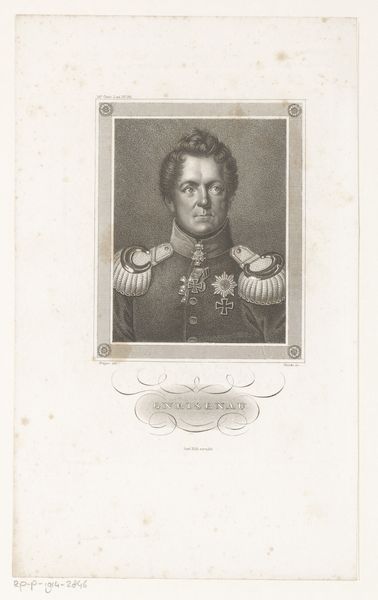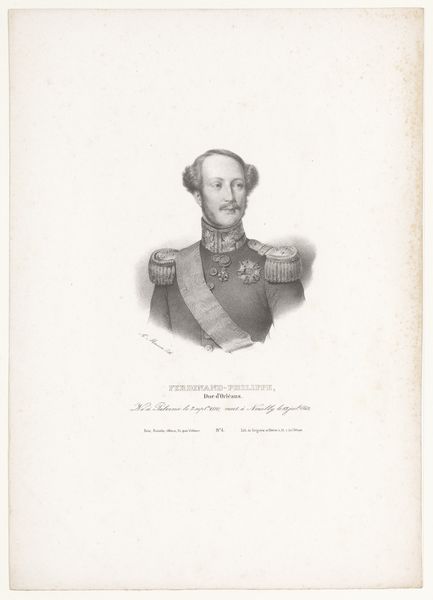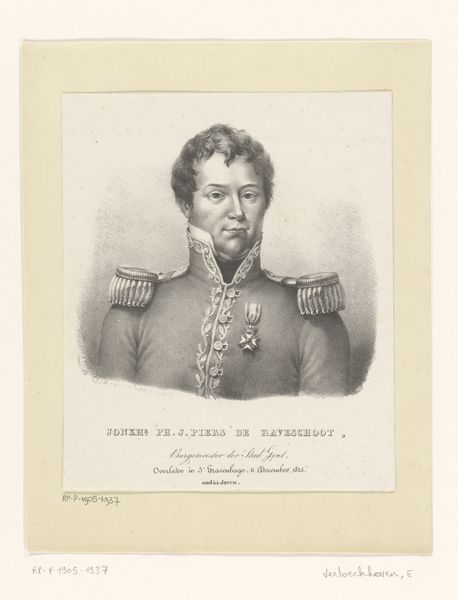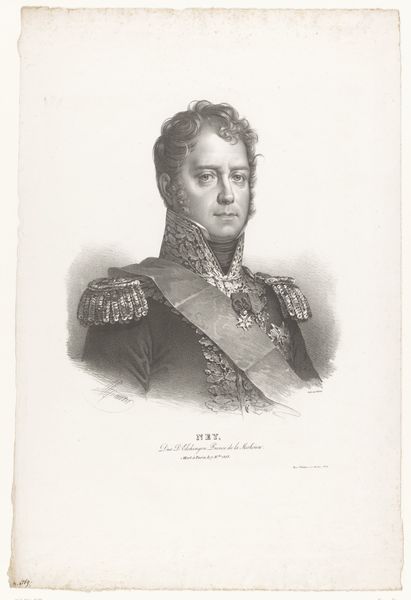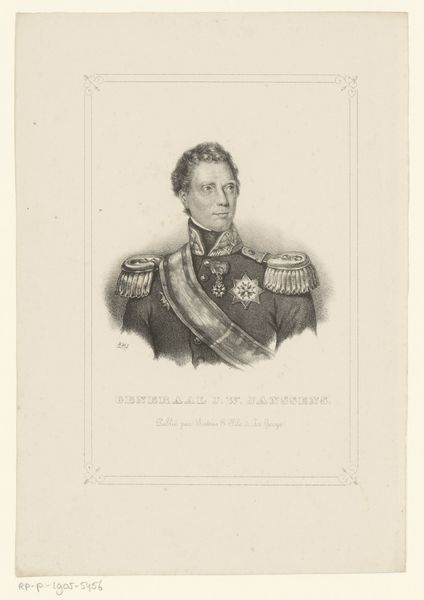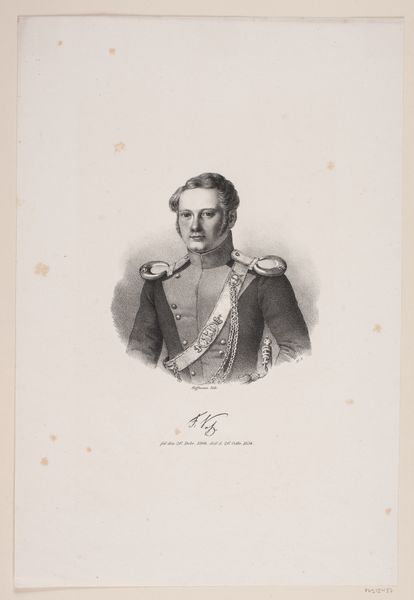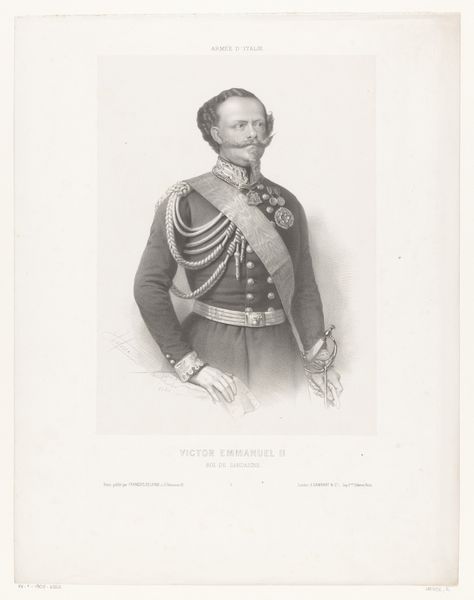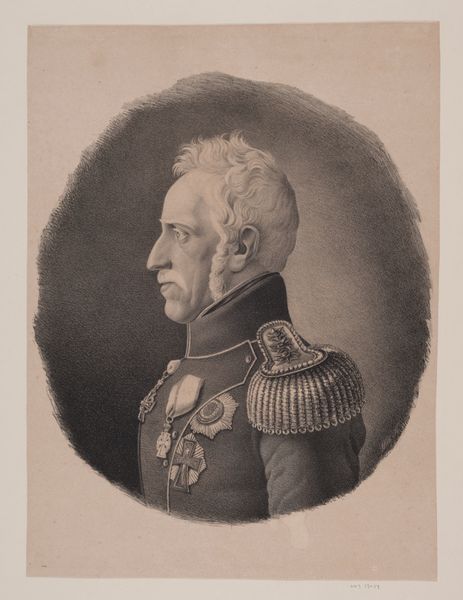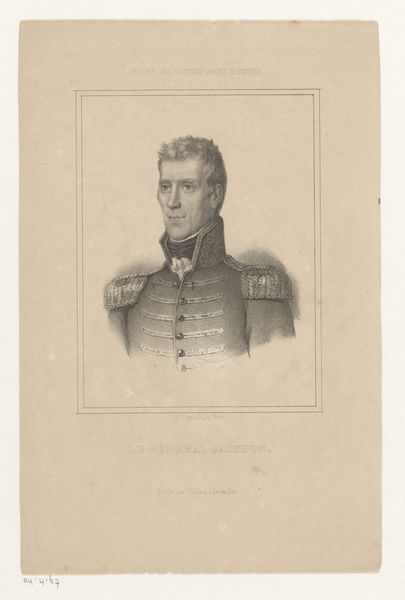
lithograph, print
#
portrait
#
lithograph
# print
#
19th century
#
history-painting
Dimensions: 304 mm (height) x 242 mm (width) (bladmaal)
Edvard Lehmann made this print of Prins Wilhelm af Hessen-Philipsthal in Denmark, likely around the mid-19th century. It gives us a glimpse into the visual culture and social hierarchies of the time. Prins Wilhelm is depicted in his military regalia, laden with medals and decorations. These aren't just aesthetic details; they signify power, status, and loyalty to the monarchy. Lehmann's print reflects the importance of lineage and aristocracy in 19th-century Europe. It’s a carefully constructed image designed to project authority. Prints like these played a crucial role in disseminating images of authority figures, reinforcing their power and influence. To fully understand this work, we can consult genealogical records, military archives, and studies of Danish court culture. These resources can reveal more about the sitter and the societal values that shaped the image. The meaning of this work is, as always, contingent on its social and institutional context.
Comments
No comments
Be the first to comment and join the conversation on the ultimate creative platform.
